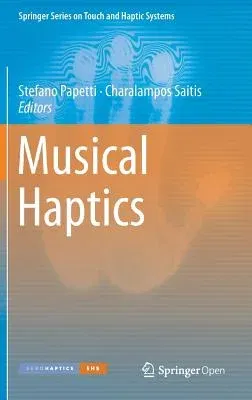This open access book offers an original interdisciplinary overview of
the role of haptic feedback in musical interaction. Divided into two
parts, part I examines the tactile aspects of music performance and
perception, discussing how they affect user experience and performance
in terms of usability, functionality and perceived quality of musical
instruments. Part II presents engineering, computational, and design
approaches and guidelines that have been applied to render and exploit
haptic feedback in digital musical interfaces.
Musical Haptics introduces an emerging field that brings together
engineering, human-computer interaction, applied psychology, musical
aesthetics, and music performance. The latter, defined as the complex
system of sensory-motor interactions between musicians and their
instruments, presents a well-defined framework in which to study basic
psychophysical, perceptual, and biomechanical aspects of touch, all of
which will inform the design of haptic musical interfaces. Tactile and
proprioceptive cues enable embodied interaction and inform sophisticated
control strategies that allow skilled musicians to achieve high
performance and expressivity. The use of haptic feedback in digital
musical interfaces is expected to enhance user experience and
performance, improve accessibility for disabled persons, and provide an
effective means for musical tuition and guidance.

